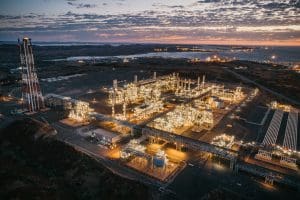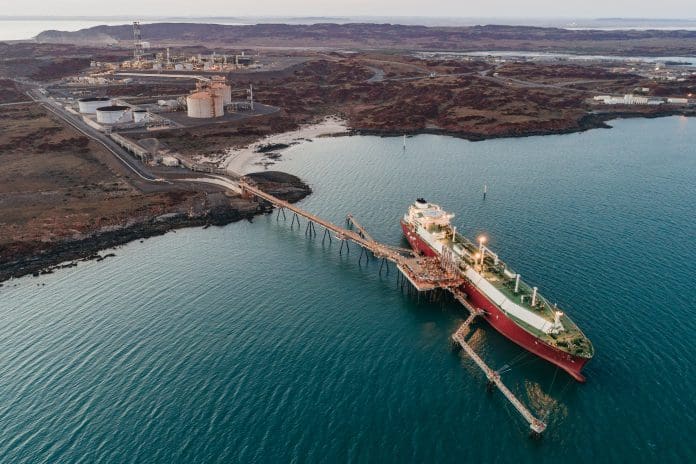Woodside Petroleum Ltd. (Woodside) and BHP Group (BHP) have entered into a merger agreement that will combine their respective oil and gas portfolios to create a global independent energy company.
On completion of the transaction, BHP’s oil and gas business will merge with Woodside, and Woodside will issue new shares to be distributed to BHP shareholders. The expanded Woodside will be owned 52% by existing Woodside shareholders and 48% by existing BHP shareholders. The transaction is subject to shareholder, regulatory, and other approvals. Both the Woodside and BHP boards of directors confirm their support for the transaction. The merger is expected to be completed in the second quarter of 2022.
The combination of the two asset portfolios will create the largest energy company listed on the Australian Securities Exchange, with a global top 10 position in the liquefied natural gas (LNG) industry by production. The combined company will have a high margin oil portfolio, long life LNG assets, and the financial resilience to help supply the energy needed for global growth and development over the energy transition.
“Merging Woodside with BHP’s oil and gas business delivers a stronger balance sheet, an increased cash flow, and an enduring financial strength to fund planned developments in the near term and new energy sources into the future,” said Woodside CEO and Managing Director Meg O’Neill. “The proven capabilities of both Woodside and BHP will deliver long-term value for shareholders through our geographically diverse and balanced portfolio of tier 1 operating assets and low-cost and low-carbon growth opportunities.”
“The proposed transaction de-risks and supports Scarborough FID later this year and enables more flexible capital allocation,” continued O’Neill. “We will continue reducing carbon emissions from the combined portfolio toward Woodside’s ambition to be net zero by 2050.”
If approved, the merger delivers significant benefits for both Woodside and BHP by creating a long-life conventional portfolio of scale and diversity of geography, product, and end markets. On a proforma basis, the combined business will consist of a conventional asset base producing around 200 MMboe; a diversified production mix of 46% LNG, 29% oil and condensate, and 25% domestic gas and liquids; a wide geographic reach with production from Western Australia, the east coast of Australia, the US Gulf of Mexico, and Trinidad and Tobago with approximately 94% of production from Economic Co-operation and Development (OECD) nations; and proven/probable reserves of more than 2 billion boe comprising 59% gas and 41% liquids.
“The merger of our petroleum assets with Woodside will create an organization with the scale, capability, and expertise to meet global demand for key oil and gas resources the world will need over the energy transition,” said Mike Henry, CEO of BHP. “Bringing the BHP and Woodside assets together will provide choice for BHP shareholders, unlock synergies in how these assets are managed, and allow capital to be deployed to the highest quality opportunities. The merger will also enable the skills, talent, and technology of both organizations to build a resilient future as the world’s needs evolve.”
The combined business will be led by Meg O’Neill as the CEO and managing director. In addition, it is intended that the Woodside Board will appoint a current BHP director as a Woodside director upon completion of the merger.
Scarborough Field
The Scarborough gas resource is located offshore, approximately 233 miles (375 km) west-northwest of the Burrup Peninsula and is part of the Greater Scarborough gas fields which holds an estimated 13.0 Tcf (3.6 x 1011 m3) of dry gas.
Woodside, as operator of the Scarborough Joint Venture, is developing the Scarborough gas resource through new offshore facilities connected by a 267-mile (430-km) pipeline to a proposed expansion of the existing Pluto LNG onshore facility.

The proposal is to initially develop the Scarborough gas field with between seven and nine high-rate gas wells, tied back to a semi-submersible floating production unit moored in 3116 ft. (950 m) of water close to the Scarborough field.
Woodside and BHP have developed a plan to reach final investment decision (FID) for Scarborough by the end of the 2021 calendar year, prior to the proposed completion date for the merger.
As part of this plan, Woodside and BHP have agreed that BHP will sell its 26.5% interest in the Scarborough Joint Venture to Woodside and its 50% interest in the Thebe and Jupiter joint ventures to Woodside if the Scarborough joint venture takes an FID by December 15, 2021. The option is exercisable by BHP in the second half of the 2022 calendar year and if exercised, consideration of US$1 billion is payable to BHP with adjustment from an effective date of July 1, 2021. An additional US$100 million is payable contingent upon a future FID for a Thebe development.
The Atlantis Phase 3 (US), Mad Dog Phase 2 (US), Shenzi North (US), and Sangomar Field Development Phase 1 (Senegal) projects remain on budget and on track, and along with significant brownfield expansion options, provide opportunity for near- and medium-term growth.
Longer term embedded options include the Wildling (US), Trion (Mexico), Calypso (Trinidad and Tobago), and Browse (Australia) projects. These options offer significant potential growth coupled with multiple exploration opportunities and partnerships.
Sustainable Operations
The new company will build on Woodside’s existing targets to reduce net emissions 15% by 2025, 30% by 2025, and net zero by 2050. Progress will be reported on both an operated and non-operated equity emissions basis, according to the press statement.
In support of the goals of the Paris Climate Agreement, and to contribute to the energy transition, the combined business will focus on building and maintaining a high return and carbon-resilient portfolio which includes natural gas and new energy technologies, such as hydrogen, ammonia, and carbon capture and storage.

















